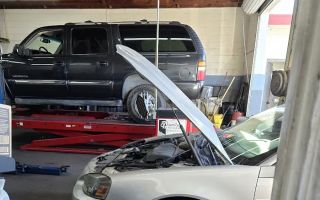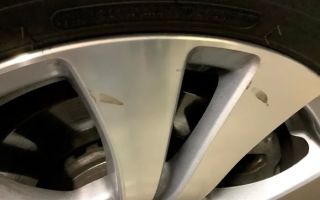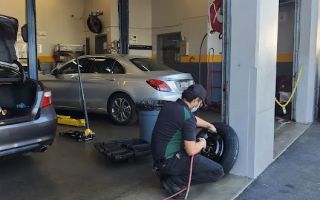Fixing an Engine Overheating Issue in Extreme Weather
As someone who spends a lot of time on the road, I’ve had my fair share of vehicle issues. However, one of the most frustrating and concerning problems I’ve faced is engine overheating, especially in extreme weather conditions. Whether it’s the sweltering heat of summer or the freezing cold of winter, extreme weather can put additional stress on my vehicle’s engine, causing it to overheat. The first time it happened, I was caught off guard and didn’t know how to deal with it. But over time, I’ve learned some valuable tips and tricks for handling an overheating engine, especially when the weather is throwing its worst at me.
Engine overheating is a common issue that can occur when the engine temperature rises above the normal operating range, and it can happen for a variety of reasons. It’s crucial to take the necessary steps to fix this problem quickly to avoid causing long-term damage to your engine or risking a breakdown. Extreme weather conditions, especially heat, can exacerbate this problem, but it’s not just high temperatures that can cause your engine to overheat. Cold weather can also affect the cooling system, leading to issues that cause the engine to overheat.
1. Understanding How Extreme Weather Affects Your Engine
Before diving into how to fix an engine overheating issue in extreme weather, it’s important to understand why weather plays such a crucial role in your engine’s health. In my experience, the weather can either cause an overheating issue or worsen an already existing one. Let’s break down how extreme weather can impact your engine:
Hot Weather: During the summer months or in particularly hot climates, the engine’s cooling system has to work harder to maintain an optimal temperature. If your radiator is low on coolant, or your cooling fans aren’t functioning properly, hot weather can cause the engine to overheat quickly. I’ve found that one of the first things to check when the temperature spikes is the coolant levels in the radiator. Without enough coolant, the engine can’t regulate its temperature effectively, leading to overheating.
Cold Weather: On the other hand, winter presents its own set of challenges. When it’s freezing outside, the engine’s coolant can become too thick, preventing it from circulating properly and leading to an overheated engine. Additionally, extreme cold can cause the battery to lose its charge, putting extra strain on the engine and the electrical system. I’ve also noticed that cold weather can cause the thermostat to malfunction, which can affect the flow of coolant and cause overheating, even if the outside temperature is low.
Both hot and cold weather require different strategies, but the goal is always the same: keeping the engine at a safe, optimal temperature. Understanding these weather effects is key to preventing engine overheating and dealing with it effectively when it happens.
2. How to Check for Overheating Symptoms
Overheating can happen suddenly, and sometimes it’s hard to tell what’s causing it. But over time, I’ve learned to look for specific signs that indicate my engine is overheating. Here are the most common symptoms that I watch for:
- Rising Temperature Gauge: This is the most obvious sign. If you see the temperature gauge rising into the red zone, your engine is overheating. I’ve learned to monitor the gauge regularly, especially in extreme weather.
- Steam from Under the Hood: If you see steam rising from under the hood, that’s a clear sign that the engine is too hot. This is when I know I need to pull over immediately and turn off the engine to prevent damage.
- Unusual Smells: A burning smell can be an indicator that coolant is leaking or that parts of the engine are overheating. I’ve encountered this smell a few times, and it’s always a sign that something is wrong.
- Loss of Power: Overheating can cause the engine to lose power or cause hesitation when I try to accelerate. If this happens, it’s often a sign that the engine is struggling to maintain a proper temperature.
If I notice any of these symptoms, I know it’s time to take action. Ignoring the signs of overheating can lead to severe engine damage, so I’ve learned to address it quickly.
3. What to Do if Your Engine Overheats in Extreme Weather
When my engine starts overheating, especially in extreme weather conditions, I take immediate action to avoid further damage. Overheating can cause the engine’s internal components to warp, crack, or even seize up, so it’s important to stay calm and follow a few key steps. Here's what I do:
- Pull Over and Turn Off the Engine: The first step is to stop driving as soon as I can safely do so. I pull off to the side of the road and turn off the engine. This helps prevent further damage to the engine by allowing it to cool down.
- Let the Engine Cool Down: I wait at least 30 minutes before attempting to open the hood. The engine can be extremely hot, and opening the hood too soon could cause burns or release steam, which can be dangerous. I let the engine cool completely before proceeding.
- Check the Coolant Level: Once the engine has cooled down, I check the coolant level in the radiator. If the level is low, I top it up with a mixture of coolant and water. I always keep an emergency bottle of coolant in my vehicle, just in case.
- Inspect for Leaks: I also check for any visible leaks around the radiator and hoses. Leaks can cause the coolant to escape, leading to an overheating engine. If I notice any leaks, I know I need to visit a mechanic as soon as possible.
- Restart the Engine: After ensuring the coolant is at the right level and no leaks are present, I start the engine again. I watch the temperature gauge closely to make sure it’s not climbing into the red zone. If it stays within the normal range, I can continue driving cautiously.
If the problem persists despite adding coolant or if the temperature gauge continues to rise, I know it’s time to call for professional help. That’s when I turn to services like Rescue & Towing for assistance in getting my car to the nearest repair shop.
4. Preventing Overheating in Extreme Weather
While it's essential to know how to fix an overheating issue, the best approach is always prevention. Over time, I’ve learned that taking proactive steps can help minimize the chances of my engine overheating, especially in extreme weather. Here are a few strategies I use:
- Regularly Check Coolant Levels: I make it a habit to check the coolant levels every few months, especially before long trips. Low coolant levels are one of the most common causes of engine overheating, so keeping them topped off is crucial.
- Inspect the Radiator and Hoses: I inspect the radiator and hoses for any signs of wear, cracks, or leaks. The hoses should be firm and not brittle. Replacing old or damaged hoses can prevent coolant from leaking, which could lead to overheating.
- Ensure the Cooling Fan Works Properly: A malfunctioning cooling fan is another potential cause of engine overheating. I make sure my vehicle’s cooling fan is functioning properly, especially during the summer months when the engine is working extra hard to stay cool.
- Replace the Thermostat: I’ve found that a faulty thermostat can cause coolant to flow incorrectly, leading to overheating. If the thermostat is stuck closed, it prevents coolant from circulating through the engine, causing it to overheat. Replacing it is a relatively easy and inexpensive fix that I do regularly.
- Avoid Overloading the Vehicle: In hot weather, I avoid overloading my car with heavy cargo, as this places additional strain on the engine and cooling system. If I need to carry heavy loads, I try to take breaks and avoid driving during the hottest parts of the day.
By performing these regular checks and maintenance tasks, I’ve managed to keep my engine from overheating, even in extreme weather conditions. Prevention is always better than dealing with the headache of an overheating engine on the side of the road.
5. When to Seek Professional Help
Even with regular maintenance, there are times when an engine overheating issue requires professional assistance. I’ve learned that if I experience frequent overheating, or if I can’t pinpoint the cause of the problem, it’s best to seek help from a trusted mechanic. Sometimes, it could be an issue with the water pump, radiator, or even the engine itself, which may require special attention and repair.
If I ever find myself stuck on the side of the road due to an overheating engine and I’m unable to resolve the issue, I turn to Rescue & Towing for roadside assistance. They provide reliable and efficient service to help get my car safely to the nearest mechanic, so I don’t have to worry about getting stranded or causing further damage to my vehicle.


























